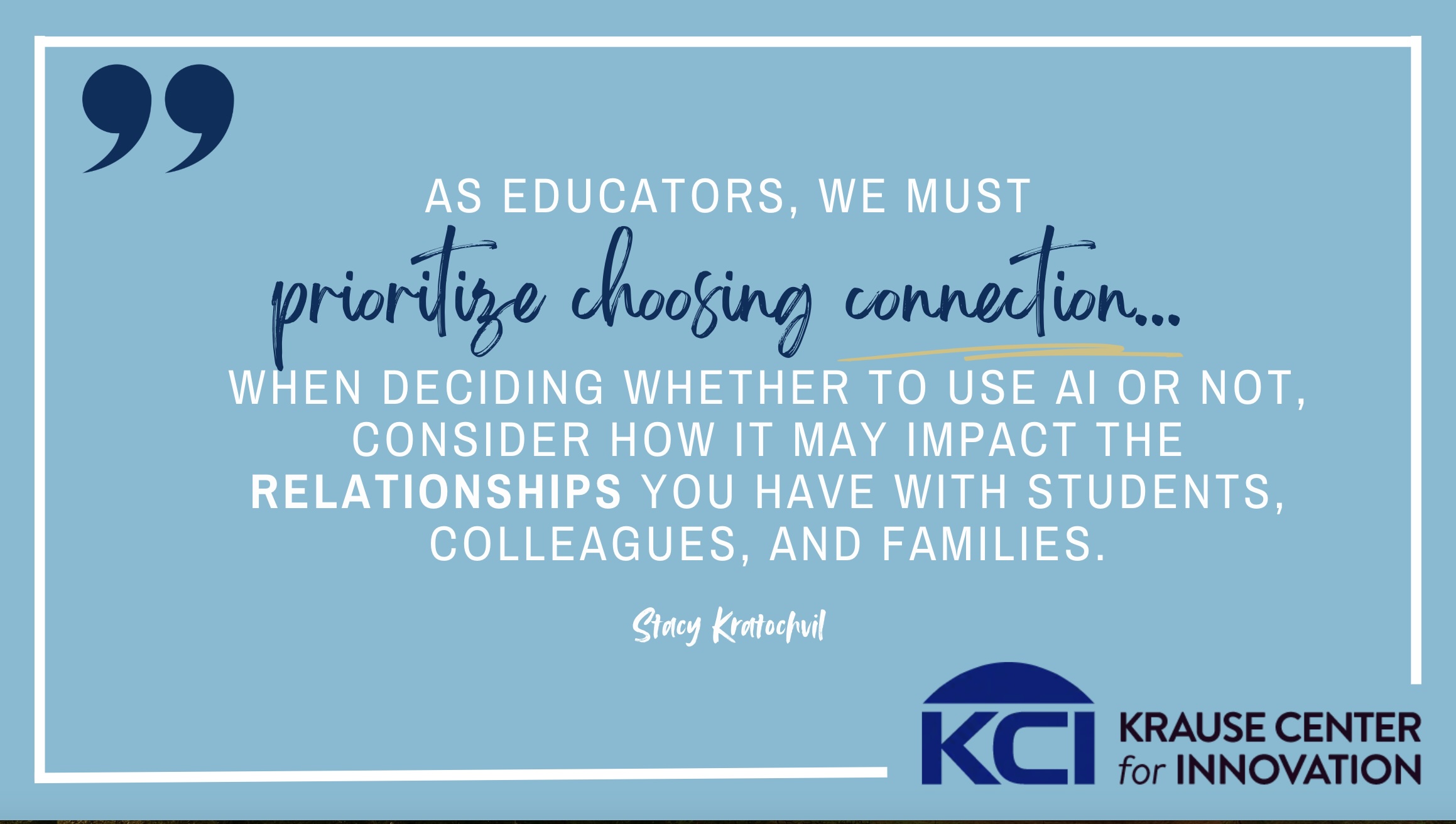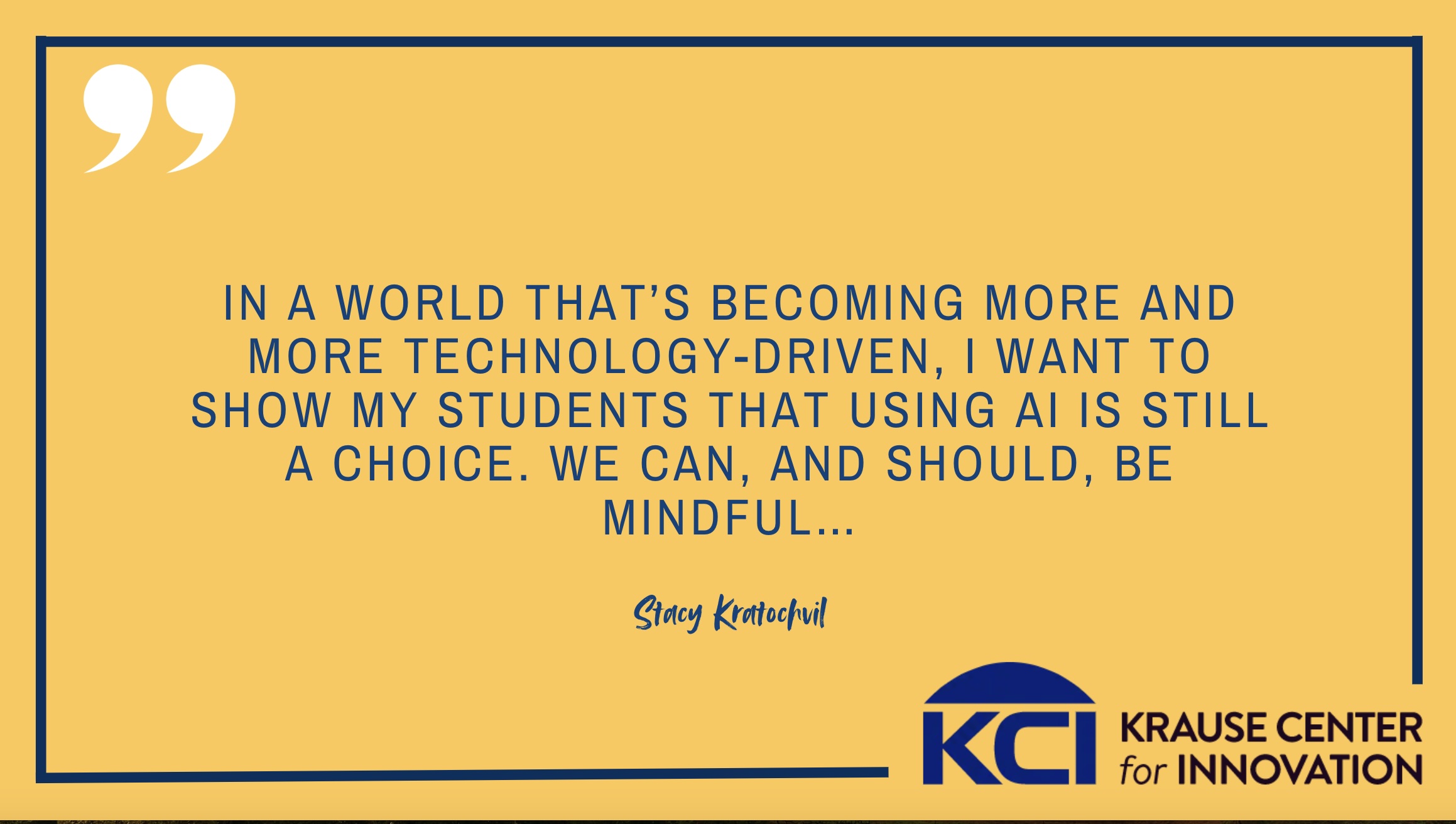January 22, 2025
I don’t really like to cook. While I love to eat, cooking is just not something that brings me joy. If there’s a faster option, like ordering in or using the microwave, I’m all about it. But even I know that some meals require care, effort, and that personal touch you can’t outsource to DoorDash.
AI in education is a lot like takeout: a great convenience for certain tasks but not the right choice for everything. As educators, we must prioritize choosing connection, relying on our unique human skills and talents when the situation calls for empathy, creativity, or precision. When deciding whether to use AI or not, consider how it may impact the relationships you have with students, colleagues, and families.

I’ve made this my mantra, and here are 3 times when I am saying no to AI:
1. When Grading Summative Assessments
Would you trust DoorDash or UberEats with a high-stakes entree or dessert, like your wedding cake? Probably not. Similarly, final grades require the care and expertise only a teacher can provide. AI might help with formative feedback or auto-grading quizzes, but summative assessments reflect more than correctness. They evaluate growth, creativity, and effort. Qualities that only a human can fully understand and assess. This is one of the clearest examples of when connection matters more than convenience.
I have to trust my students to make good decisions with AI, and I want them to trust me, too. One of the best ways I can build that trust and earn their respect and credibility is by being transparent about how I use AI. For instance, I let them know that I don’t use AI to grade their projects and essays. This might actually be the most important lesson I model with AI. Sure, showing them how I use it to improve my life is helpful, but sharing what I choose not to use AI for is even more powerful. It’s a conscious decision, and I hope it inspires them to feel empowered to say no to tech when it matters. In a world that’s becoming more and more technology-driven, I want to show my students that using AI is still a choice. We can, and should, be mindful about how and when we embrace emerging technologies.

Side note: I also don’t recommend using AI detectors. I’ll be going into more in an upcoming blog as well, but the fact is: they do not work. I actually think it’s kind of a scam that edtech companies are even allowed to sell this “feature.” None of the detectors out there are 100% accurate, which means there is at least a 1% chance (or more) that I may be falsely accusing a student of cheating. Imagine accusing a student of something as serious as academic dishonesty, only to discover later it was a mistake made by a flawed algorithm. That’s not just a mistake. It is a breach of trust that can take years to repair, if even possible. I’m not willing to risk that. Again, I choose to prioritize human connection.
Building trust with students is crucial, but connection extends beyond the classroom. It also matters in how we communicate with families.
2. When Writing Personal Emails or Messages
AI-generated emails are the fast food of communication. Quick and convenient, but often lacking the depth and care families deserve. Parent-teacher communication thrives on authenticity and trust, which can’t be achieved with cookie-cutter responses. Taking the time to craft thoughtful messages strengthens relationships and shows families you truly care.
The one exception? Translation tools. These are like pre-made ingredients that help you connect with multilingual families while maintaining the warmth and personalization of your message.
In addition to fostering trust, there are moments where precision is critical. These tasks also deserve our full attention.
3. When High Accuracy is Essential
Have you ever ordered takeout, only to discover they left out the sauce or got your order wrong? I’ve had food delivered to a house one city over with the same street name as mine (I call these distant neighbors my “address twin”), and it drives me absolutely nuts. Only once have I gotten my address twin’s food, while they’ve had a load of groceries appear on their porch multiple times! Ugh!
Just as a missing sauce can ruin a meal, even small errors in AI-generated data can have outsized consequences in education. Whether it’s a report card comment or a student’s IEP, accuracy is non-negotiable. When tasks demand accuracy, like when sharing important data, it’s best to cook the “meal” yourself. This ensures your work reflects your expertise and commitment to your students.
Conclusion:
While I might not love to cook, even I recognize the value of doing the important things myself. It’s the same with teaching and AI. Some tasks are perfect to collaborate with AI on, but others demand your human intuition, creativity, and care. As educators, we build relationships, foster trust, and inspire growth. The best classrooms (like the best meals) find a balance between convenience and connection, relying on technology for support while keeping the heart of teaching fully human.
Reflection Questions:
- What teaching tasks are best left to you and not AI? Where does your personal touch make the biggest impact? How do you protect time for these amidst the demands of your day?
- How do you ensure authenticity in your interactions with students and families?
- How can you prioritize choosing connection in your classroom?
Explore Free Resources to Learn More
- See other posts in this AI Blog Series
- Apply for the AI Capstone Course
- Learn more about KCI’s Silicon Valley Artificial Intelligence Project
Note on AI Use:
I used ChatGPT to help me organize and refine my thoughts for this blog. I provided the ideas, notes, and direction, and the AI tool helped me pull it all together. I reviewed and edited everything to make sure it reflects my voice, stories and the message I want to share.

